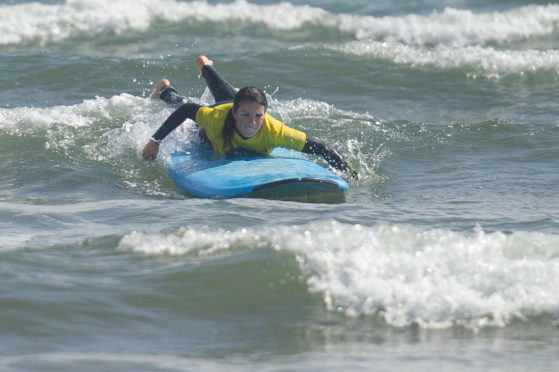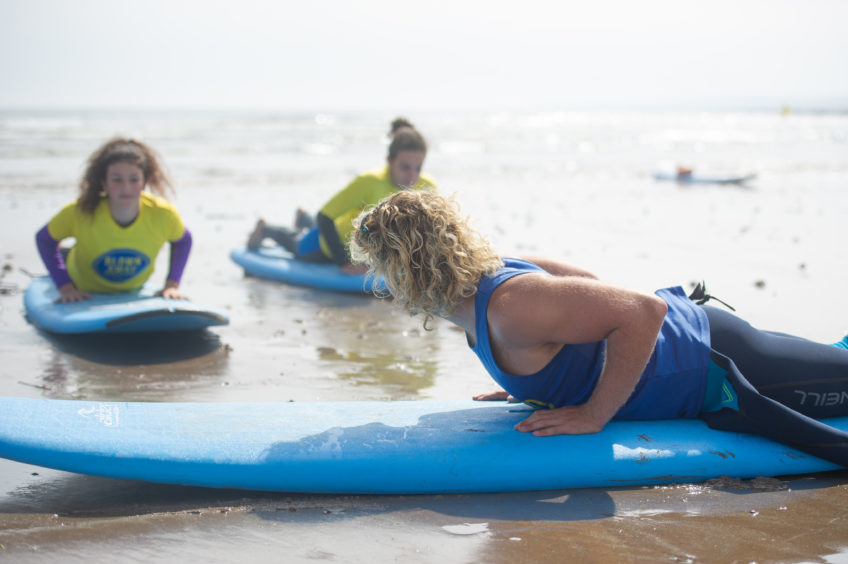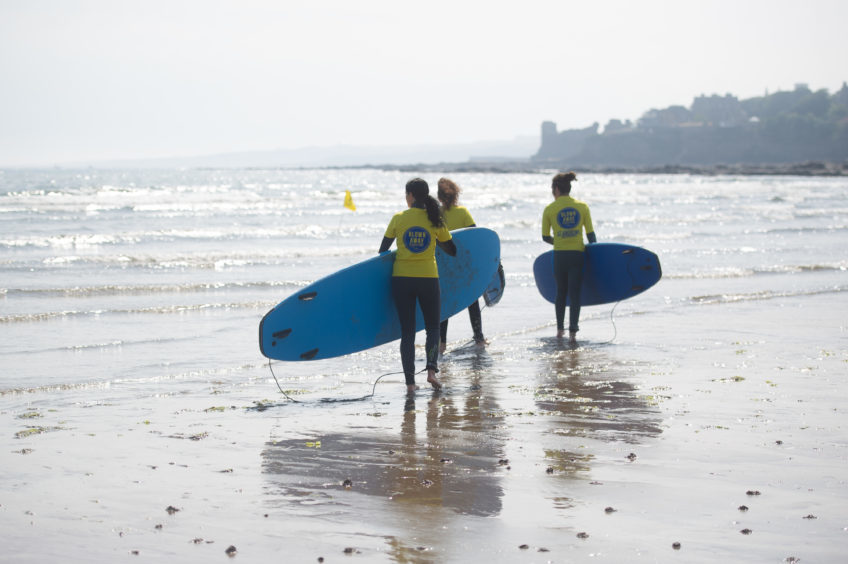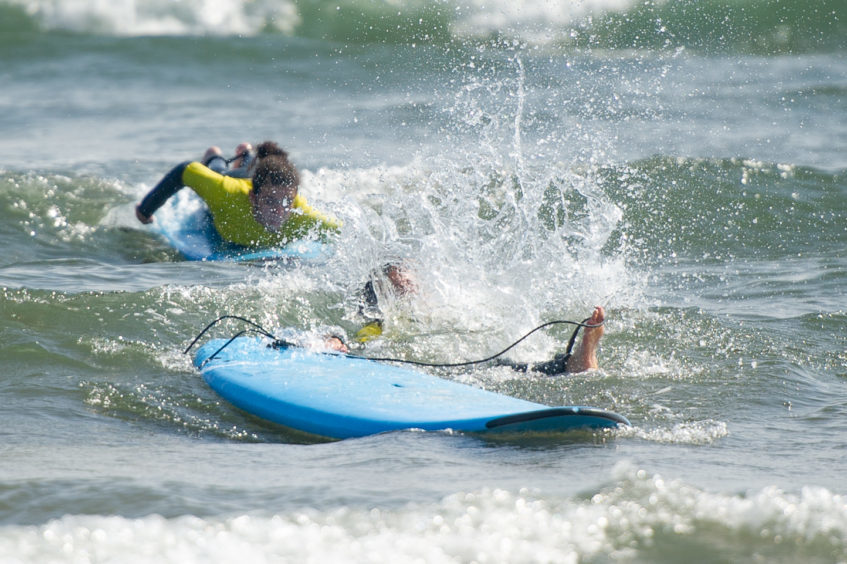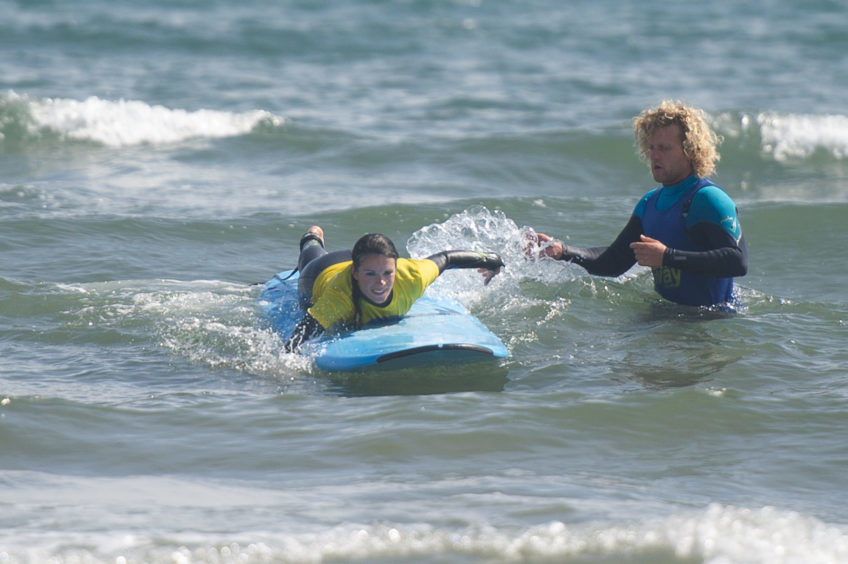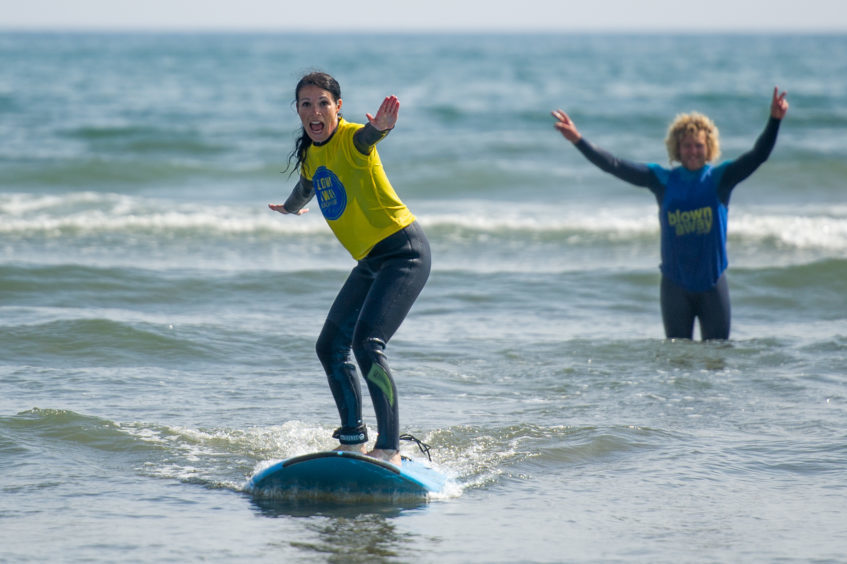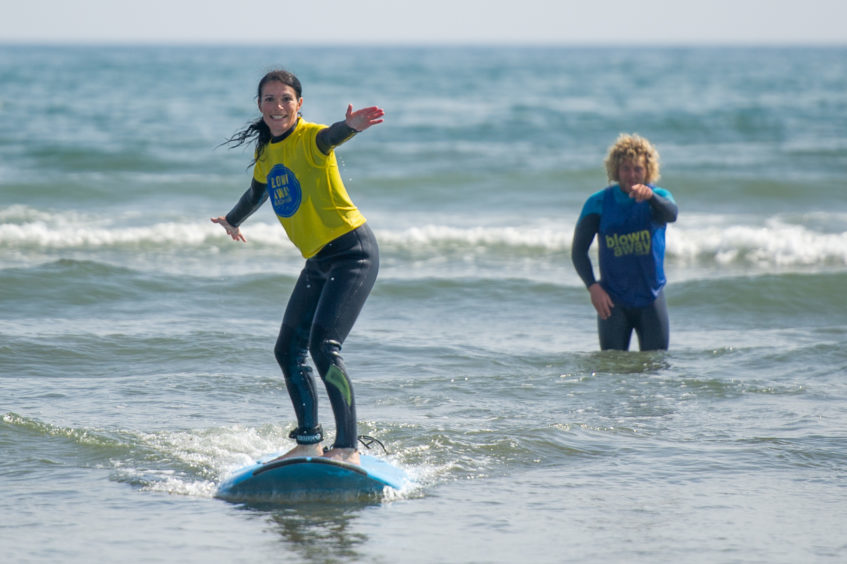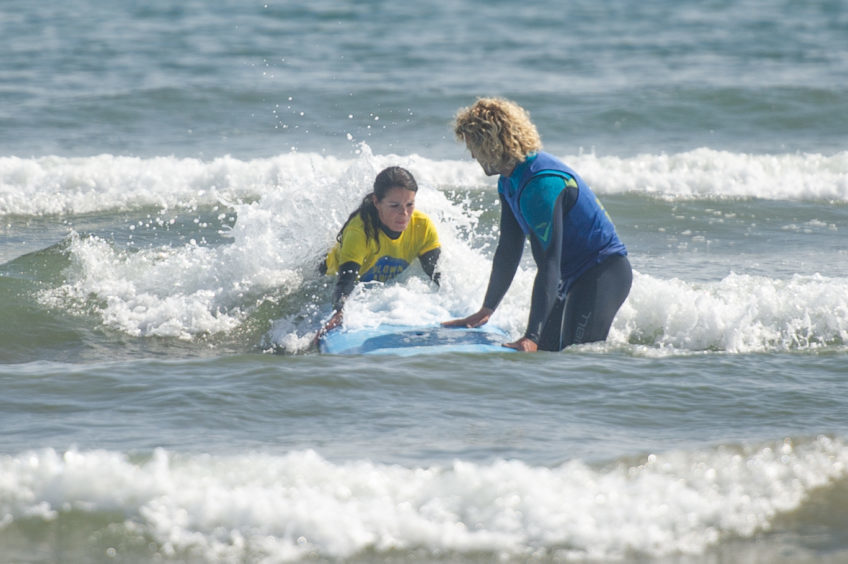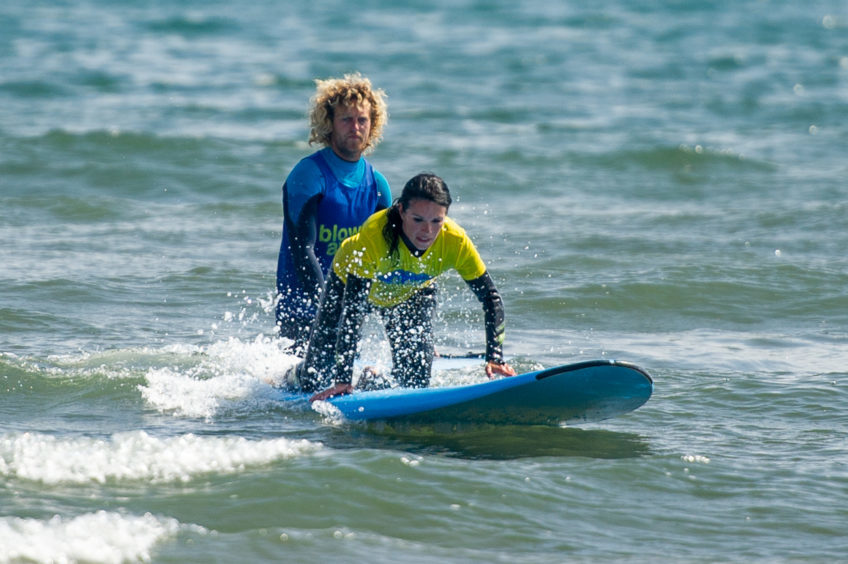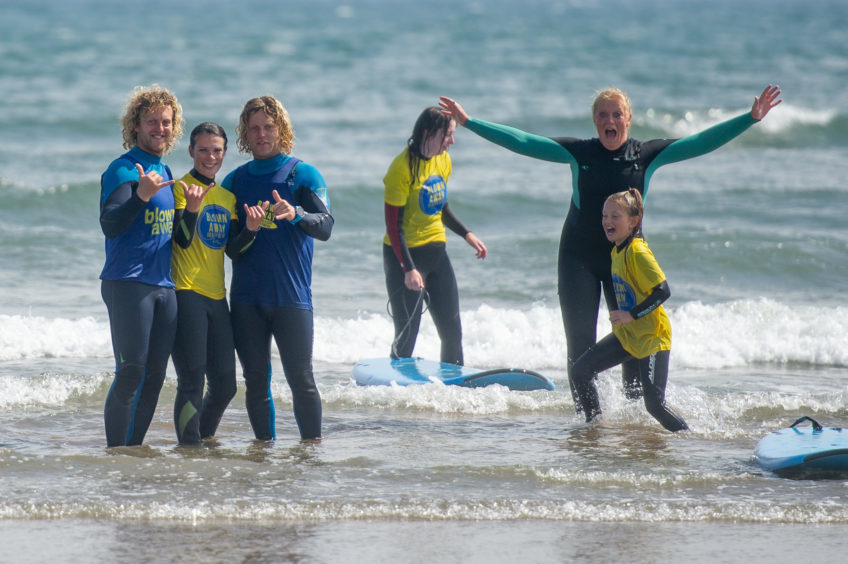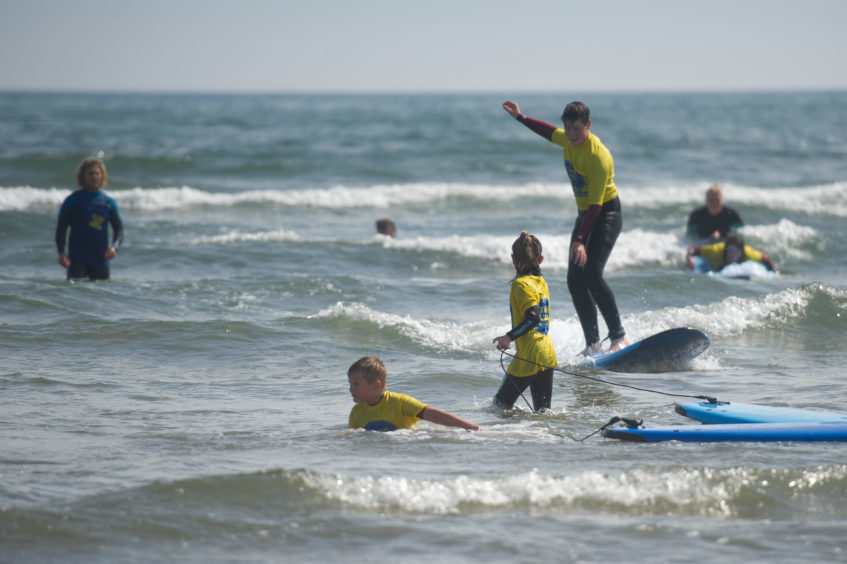Surf virgin Gayle attempts to catch some waves during a lesson at West Sands in St Andrews
The sun is burning through the early morning haze when I rock up at West Sands in St Andrews.
The temperature gauge in my car registers a blistering 27C – absolutely perfect for my very first surfing lesson.
My instructor is curly haired Guy McKenzie of Blown Away, an outdoor adventure company which specialises in beach-based activities.
Also joining the session are two shy Italian teenagers who claim never to have surfed before.
Once we’ve squeezed into wetsuits, Guy shows us how to wax our surfboards to make them less slippy. Then we attach leashes to our feet which stop the boards from doing a disappearing act.
Before venturing into the water, Guy takes us through the basics of surf stance on dry land.
“Stand where you think feels natural,” he says, and I end up with my left foot forward and front foot back. Apparently this is a “regular” stance whereas the other way round is “goofy”.
Then we lie on our bellies, toes touching the tails of our boards. From here, we practice paddling.
The next bit is the most tricky – getting up, or, in surf lingo, “popping up”. You want to do this rapidly but not so fast you keel over.
“Place your hands below your chest, with palms flat while your fingers curl over the sides of the board,” says Guy.
“Then push your body up with your arms and tuck your feet up and under you. Get to your knees and then bring up your feet until you’re standing.”
The perfect pose? You want your knees bent, arms loose and extended, and torso leaning forward to lower your centre of gravity. Guy describes it as a kind of “crouch”.
Once we’re ready, we wade out into the water until we’re almost waist deep and turn our boards to face the shore. Then it’s a case of waiting for a decent wave.
When we see one coming (it helps if you know how to “read” waves and tell what’s a good one and what’s not), we get into position, lying on the board.
“When you feel you’ve caught the momentum of the wave, paddle like mad and then stand up!” says Guy. Easier said than done.
One by one, we topple over, miss waves or get wiped out. The main problem, for me at least, seems to be that I’m not quick enough off the mark, or I’m too quick, and fall over in my over-excited state.
It’s also quite hard to gauge what a good wave will be, and when exactly to attempt to “pop up”.
When I do finally catch a wave, it’s an amazing feeling – one that makes me want to cry out: “Totally rad, dude! Awesome! Gnarly!”, but thankfully, I manage to keep schtum.
After a few spectacular wipe-outs, I succeed in catching and riding another three waves. Jeez, this is addictive!
At one point, I very nearly crash into one of the Italians and Guy reminds us it’s important to look ahead, in the direction you’re going, and keep your eye out for obstacles (or other surfers).
The remainder of the session is spent practicing what we’ve learned and paddling out to join another group of surfers being taught by Guy’s twin brother, Jamie.
I pledge to return for another few lessons as this is a heck of a lot of fun and progress is surprisingly speedy.
Okay, so the waves are only around three feet (Guy and Jamie pride themselves on catching huge ones) but you have to start somewhere.
“The aim during your first surfing lesson is to catch a wave – and you caught at least four,” beams Jamie.
“While you rode waves straight in towards the shore, the next step would be to try turning, or angling, across the waves and surfing through barrels (big curling waves) like pro surfer Kelly Slater.”
That’s a pretty big ask but it’s something to aim for, I guess!
At the end of the session, Guy and Jamie present me with one of their “Beach Rats” T-shirts and boy, do I feel far out wearing it. I’d even go as far as to say: “It’s the bomb, dude.” Cringe!
While the McKenzie twins may look every inch the stereotypical surfer dudes, they’re actually pretty down to earth. A lesson with them is guaranteed to be fantastic fun.
info
Guy and Jamie set up Blown Away in 2007 and offer instruction in everything from surfing to landyachting, paddleboarding and kayaking. They’ve been running their kids’ summer beach camp, “Beach Rats”, for kids ages 8-16 throughout the school holidays, with all kinds of watersports thrown in. “Beach Rats” will also run during the October holidays and again in summer 2019. For more details, see www.blownaway.co.uk
